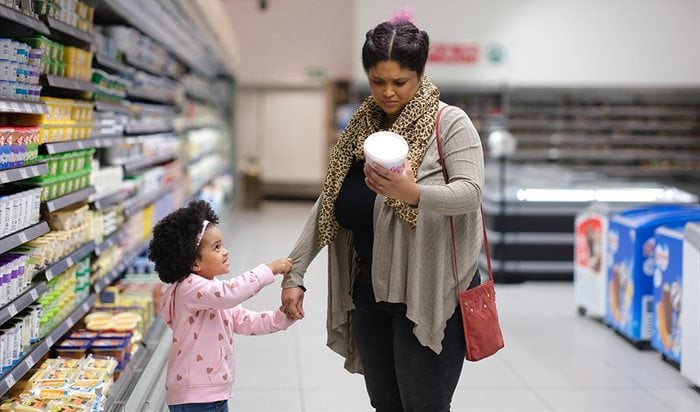Campaign calls for warning labels on foods high in unhealthy ingredients

Following global trends, South Africans are consuming an increasing amount of ultra-processed foods. Nutrients of concern contribute to non-communicable diseases such as diabetes, heart disease and some cancers. Worryingly South Africans have a 51.9% chance of dying from an NCD – diabetes, heart diseases and stroke being the most likely culprits – according to the NCD Countdown 2030. South Africa has one of the highest prevalence rates of diabetes in sub-Saharan Africa.
Demystifying nutrition labels
When shown images of foods with warning labels, parents indicated that they would buy fewer foods high in nutrients of concern that were labelled as “high in sugar, sodium, saturated fat” and switch to non-labelled healthier, foods. This is according to a study by researchers from the University of Limpopo, the University of Western Cape, and the University of North Carolina on parents’ food purchasing decisions and perceptions of unhealthy food.
The researchers noted that poor nutrition knowledge and affordability surfaced as some of the leading influencers of parental food selection.
Heala states that parents looking to make better health choices for their families are bombarded by confusing and overly technical nutritional information buried at the back of the tins, boxes, and bottles at the store, and that easy-to-read front-of-package labelling could translate the information consumers need to know into simple language.
The organisation wants “HIGH IN” front-of-pack warning labels to clearly identify products that are high in things like sugar, salt, saturated fat, to help consumers easily spot unhealthy foods.
Nzama Mbalati, Heala's programme’s manager, says: “New research shows that warning labels on unhealthy packaged food would be a feasible and equitable policy to help South Africans identify and reduce purchasing of unhealthy food.
“While new draft legislation on packaging is waiting in the wings, there have been protracted delays, so Heala is urging consumers and community organisations, traditional leaders and NGOs to call for change. It is time to empower shoppers with the information they need to make the right decisions and protect their families’ health.”
Mbalati continues: “At the moment, one needs to be as informed as a dietician to know what the information at the back of a packet of food means. To empower consumers, we need front-of-package labels to help them identify what the industry is selling to them.”
Children most vulnerable
Makoma Bopape, senior lecturer at the University of Limpopo’s Department of Human Nutrition and Dietetics, is part of a team that completed a study on the efficacy of front-of-package labels in parental food purchasing. Bopape says the research indicates that children in both urban and rural settings are the most vulnerable consumers of ultra-processed foods.
“Increasing childhood obesity and poor eating habits have resulted in children as young as 12 being diagnosed with Type 2 diabetes, hypertension and related lifestyle diseases. Ultimately, poor eating is not only endangering the physical health of the younger generation but also impacting on their mental health as overweight children tend to become isolated and depressed,” she adds.
Bopape says that, while research showed that poor buying choices were also the result of lack of nutritional knowledge amongst parents and caregivers who were the main decision-makers when purchasing food for children, even consumers who were aware of nutrition-related issues quickly became discouraged when attempting to read food labels.
“People cannot make sense of what all of those numbers on food labels represent. We also found that a lot of people do not read labels because of lack of time. The ingredient list is long and few people can go through each and every item, so they end up looking for just one or two specific ingredients,” says Bopape.
Heala notes that its decision to ramp up its campaign this year is in line with the World Health Organization’s (WHO) recommendations that governments must legislate the use of easy-to-understand nutrition labels so that consumers think twice before placing foods that are high in sugar, salt or saturated fat in their shopping baskets. Front-of-package label regulations have already been implemented in at least 10 countries, including Argentina, Mexico and Chile.
Through its campaign, Heala encourages parents, caregivers, and ordinary citizens to join its call to The National Department of Health (NDoH) and sign its petition.
“Addressing non-communicable diseases needs legislative, regulatory and other measures agency to help save lives now. South Africa needs front-of-package labelling on its toolbox to help consumers make better choices and live healthier lives,” says Heala programmes head, Nzama Mbalati.

























